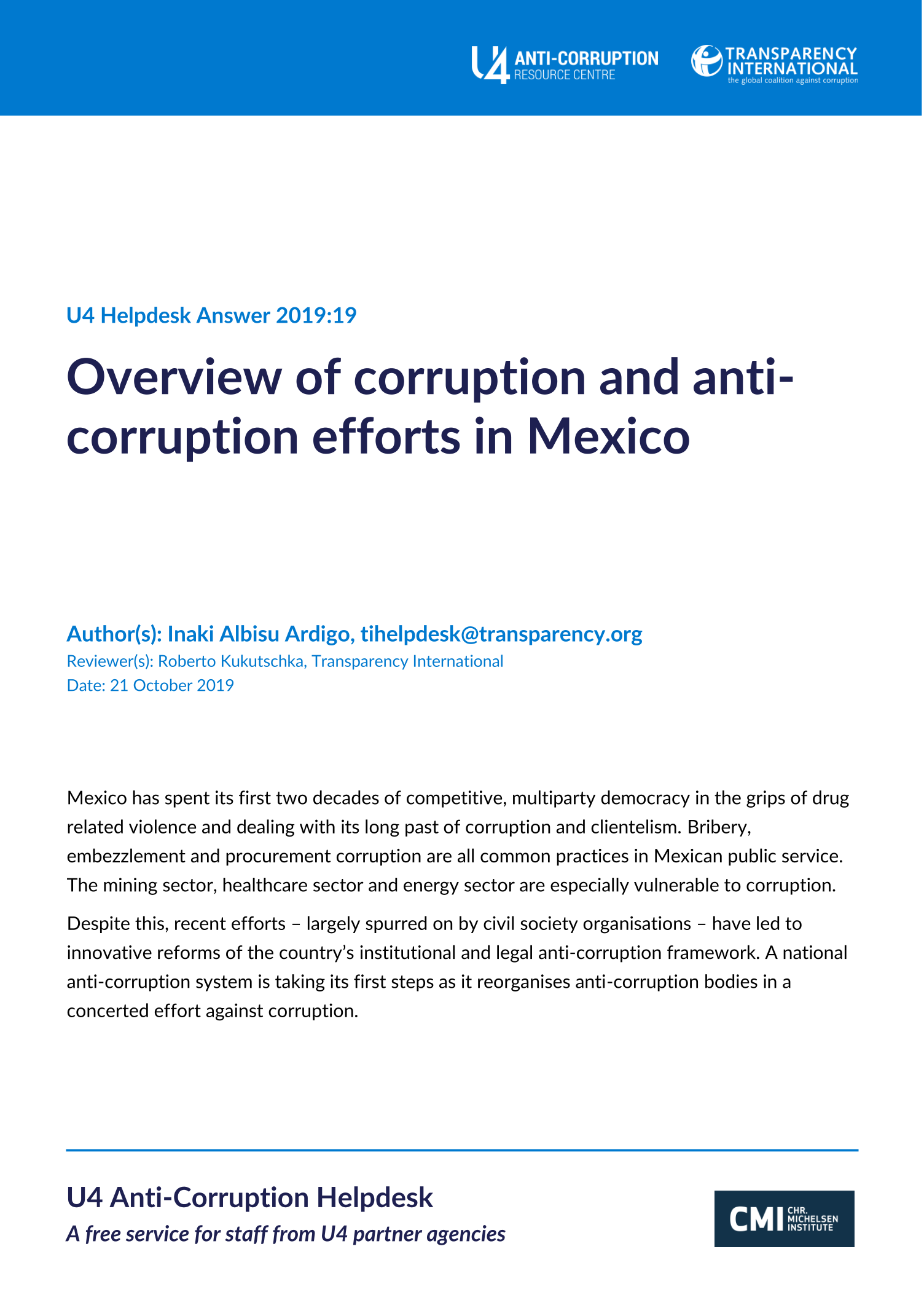Main points
- The extent of corruption is widespread across Mexico, both at the federal and subnational levels.
- Corruption in public procurement is a notable problem that leads to overpricing for both the public and private sectors, notably in the energy sector.
- In 2015, Mexico approved a national anti-corruption system which creates a framework for coordination between all federal and state anti-corruption bodies as well as civil society.
- The media and civil society, though hurt by the drug war, continue to be an important driver for anti-corruption reforms.


